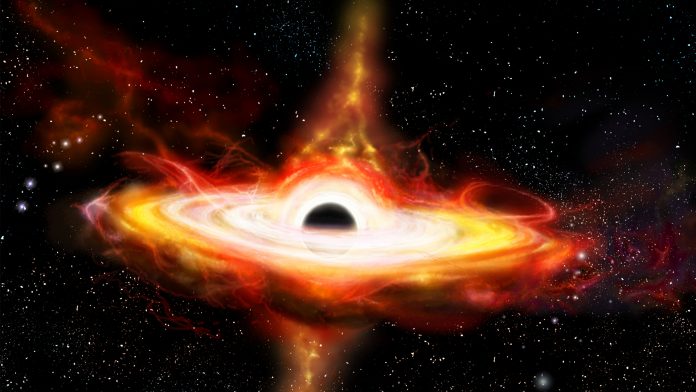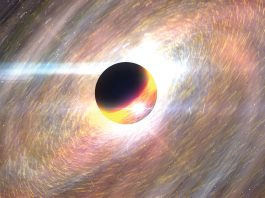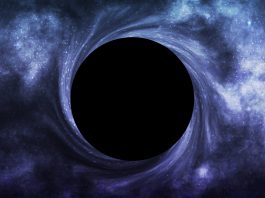A team of researchers have identified a gigantic interstellar wind that was produced by a supermassive black hole 13.1 billion years ago.
By utilising the Atacama Large Millimeter/submillimeter Array (ALMA), scientists have unearthed the earliest ever example of galactic wind – indicative of supermassive black holes that played an acute role in the growth of galaxies in the primitive Universe.
Supermassive black holes characteristically reside at the centre of large galaxies; their mass is estimated to be closely proportional to the mass of the central region (bulge) of the galaxy in the nearby Universe – millions to billions of times more than our Sun.
The reason for this is that the sizes of galaxies and black hole fluctuate in size by around ten orders of magnitude, with astronomers hypothesising that both evolved together through a process of physical interaction.
This interaction can be facilitated by galactic wind – as a supermassive black hole engulfs matter – the matter starts to travel at a high speed as the immense gravity of the singularity influences it, emitting intense energy that exerts the matter outwards, creating galactic wind.
Takuma Izumi, the lead author of the research paper and a researcher at the National Astronomical Observatory of Japan (NAOJ), said: “The question is when did galactic winds come into existence in the Universe? This is an important question because it is related to an important problem in astronomy: How did galaxies and supermassive black holes coevolve?”
By employing the NAOJ’s Subaru Telescope – capable of wide-field observation – the researchers were able to scan the vast abyss of space for supermassive black holes, identifying them in more than 100 galaxies from over 13 billion years ago.
The team then analysed the gas motion in the host galaxies of the supermassive black holes using ALMA’s high sensitivity, discovering the galaxy HSC J124353.93+010038.5 and then finding J1243+0100 with the Subaru Telescope, obtaining radio waves released by the galaxy’s dust and carbon ions.
From detailed scrutinisation of ALMA’s data, the team located a high-speed gas flow travelling at 500km per second in J1243+0100 with sufficient energy to push away stellar material in the galaxy and halt star formation – the earliest true evidence of galactic wind. This record was previously held by a galaxy from 13 billion years ago, meaning this novel finding originated around 100 million years prior.
Additionally, the researchers measured the motion of quiet gas in J1243+0100 to estimate the galaxies bulge based on its gravitational balance, finding it 30 billion times that of the Sun, with the mass of the supermassive black hole being 1% of that. This mass-ratio is nearly indistinguishable from the modern Universe’s radio of black holes and galaxies, indicating that the coevolution of supermassive black holes and galaxies has taken place since a billion years after the Universe’s inception.









